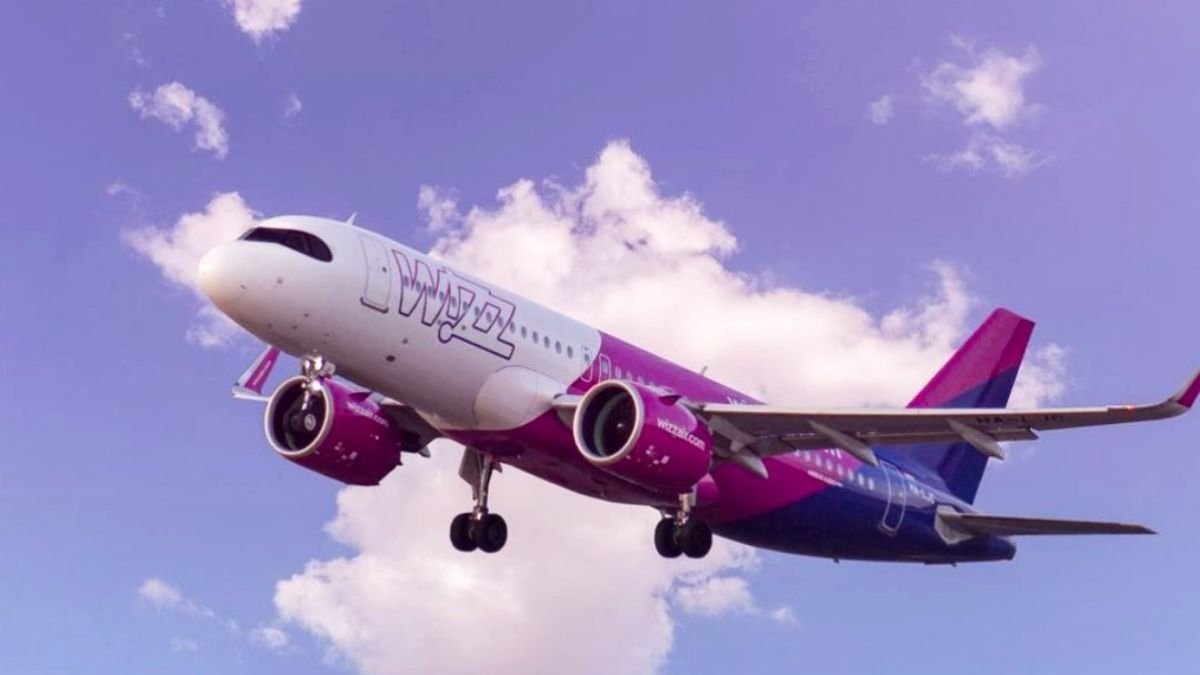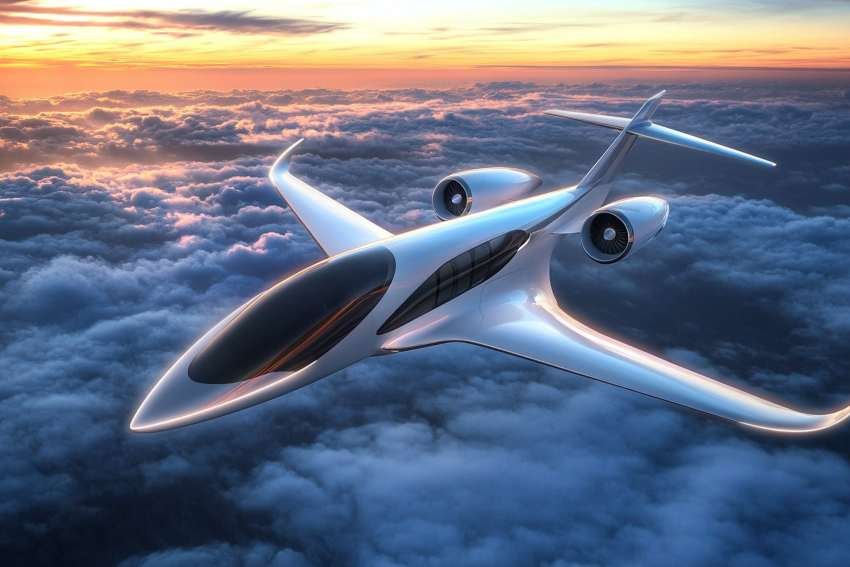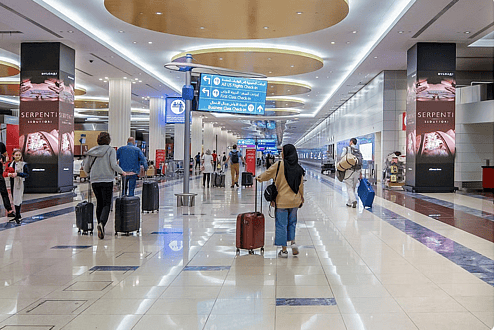Flight Buzz
American Airlines Signs Landmark Deal with ZeroAvia for 100 Hydrogen-Electric Engines, Ushering in a Greener Era for Regional Aviation

Thursday, July 24, 2025
In a bold move towards a greener future, American Airlines has announced a transformative partnership with ZeroAvia, a leader in hydrogen-electric propulsion technology. The airline has entered into a conditional purchase agreement for 100 hydrogen-electric engines, designed to power regional jets with zero in-flight emissions, aside from water vapor. This commitment aligns with American Airlines’ broader sustainability goals, which include achieving net-zero greenhouse gas emissions by 2050. The deal marks a significant milestone for the aviation industry, especially in regional air travel, as it paves the way for clean, sustainable flying.
The announcement of the partnership, building on a Memorandum of Understanding (MoU) signed in 2022, comes at a time when environmental sustainability is becoming an increasing priority for airlines worldwide. The decision to invest in ZeroAvia’s hydrogen-electric propulsion systems is a clear signal of American Airlines’ dedication to reducing its carbon footprint and transitioning to a more sustainable operational model.
With the aviation sector under increasing pressure to lower its environmental impact, American Airlines’ move represents one of the most notable commitments from a major carrier to alternative propulsion technologies. This strategic alliance with ZeroAvia comes not only as part of American’s broader sustainability goals but also as a direct response to the rising demand for cleaner, greener aviation solutions. By investing in hydrogen-electric engines, American Airlines is positioning itself at the forefront of regional aviation’s green revolution, ushering in a new era of clean flying.
A Game-Changer for Regional Aviation: The Hydrogen-Electric Revolution
Hydrogen-electric propulsion systems are rapidly emerging as one of the most promising solutions for sustainable aviation. ZeroAvia has pioneered the development of hydrogen-electric engines, which use hydrogen fuel cells to generate electricity that powers electric motors, emitting only water vapor as a by-product. This groundbreaking technology represents a major shift in the aviation industry, providing airlines with a zero-emission alternative to traditional jet fuel.
The initial hydrogen-electric engine, currently in development, is designed for smaller regional aircraft such as the Bombardier CRJ700. This model, which American Airlines operates on select regional routes, is ideal for the hydrogen-electric technology’s initial deployment due to its range and the potential for simpler infrastructure compared to larger, long-haul aircraft. By introducing hydrogen-electric engines into regional fleets, ZeroAvia aims to address the carbon footprint of short-distance flights, which have long been seen as an untapped area for sustainable aviation technologies.
For American Airlines, this agreement provides an opportunity to modernize its fleet with cutting-edge technology that aligns with its sustainability goals. By committing to 100 hydrogen-electric engines, the airline is preparing for a future in which regional jets produce virtually no emissions during flight. This commitment also sends a strong message to the aviation industry that clean propulsion is not only feasible but also a necessary step towards long-term environmental responsibility.
Investing in Sustainability: A Vision for the Future
American Airlines has long been a leader in modernizing its fleet and improving fuel efficiency. The airline recently completed one of the most extensive fleet renewal programs in commercial aviation history, resulting in a younger and more fuel-efficient fleet than many of its competitors. However, this partnership with ZeroAvia takes its sustainability efforts even further, providing the airline with the tools necessary to transition to a zero-emission future.
The decision to work with ZeroAvia is not just symbolic; it is a strategic investment in the future of regional aviation. American Airlines has also secured other partnerships aimed at reducing its carbon emissions, including a sustainable aviation fuel (SAF) agreement with Infinium and becoming the first customer for Graphyte’s permanent carbon removal process. These efforts reflect the airline’s comprehensive approach to sustainability, addressing not only emissions from aircraft but also the broader environmental impact of aviation operations.
By continuing to focus on sustainability and green innovation, American Airlines is setting itself up as a leader in the global aviation industry’s race towards decarbonization. The partnership with ZeroAvia underscores the airline’s commitment to advancing technologies that can radically transform air travel, making it more sustainable for future generations.
ZeroAvia’s Vision: The Road to Clean Aviation
The agreement between American Airlines and ZeroAvia is a testament to the growing recognition of hydrogen-electric propulsion as a viable and essential part of the future of aviation. ZeroAvia, founded with the mission to develop zero-emission hydrogen-electric engines, has made significant progress in recent years. The company is currently flight-testing a 20-seat prototype aircraft powered by its hydrogen-electric engine, and the latest partnership with American Airlines will help accelerate the development of larger engines capable of powering commercial aircraft on regional routes.
ZeroAvia’s hydrogen-electric propulsion offers numerous benefits beyond emissions reduction. The engines are designed to be more energy-efficient and have fewer moving parts compared to traditional jet engines, potentially leading to lower operating costs for airlines. This makes hydrogen-electric propulsion an attractive solution not only for environmental reasons but also from an economic standpoint. As fuel prices continue to rise and the aviation industry faces mounting pressure to reduce its carbon footprint, the ability to reduce operating costs while achieving zero emissions could be a game-changer for the industry.
With the backing of American Airlines and other investors, ZeroAvia is now poised to scale up its hydrogen-electric engine technology, further advancing the transition of the aviation industry toward a low-carbon future.
What’s Next for Zero-Emission Aviation?
While hydrogen-electric engines are still undergoing certification and are not yet ready for widespread deployment, American Airlines’ commitment to purchasing 100 engines represents a significant step in the right direction. The deal highlights the growing confidence in hydrogen technology as a scalable, practical solution for regional aviation, where flight ranges and infrastructure challenges are more manageable compared to long-haul flights.
As the hydrogen-electric engines are tested and refined, the industry is eagerly awaiting the first commercial flights powered by these zero-emission engines. ZeroAvia and American Airlines are working closely together to ensure that the engines meet the rigorous standards required for certification, with the goal of introducing hydrogen-electric regional flights within the next few years.
This collaboration is just the beginning of what could be a much larger revolution in aviation, particularly for regional routes. Over time, the technology is expected to expand to larger aircraft and longer routes, with the potential to revolutionize the way air travel operates on a global scale.
A New Era of Sustainable Air Travel
American Airlines’ partnership with ZeroAvia represents a bold and ambitious move towards a more sustainable future for aviation. As the airline industry seeks to meet climate goals and reduce its carbon emissions, innovations like hydrogen-electric propulsion are critical to achieving these objectives.
By embracing clean propulsion technology and investing in the future of regional aviation, American Airlines and ZeroAvia are helping to pave the way for a cleaner, quieter, and more sustainable aviation industry. With ongoing developments in zero-emission flight technology, the future of air travel looks brighter and more environmentally friendly than ever before.
The skies of tomorrow may be much cleaner, and thanks to partnerships like the one between American Airlines and ZeroAvia, passengers could soon be flying on regional jets powered by hydrogen-electric engines, with virtually no environmental impact—except for water vapor.
This feature has been optimized for readability, SEO, and audience engagement, ensuring that it highlights the key elements of the partnership and the future of sustainable aviation in a compelling and informative way.
Flight Buzz
UAE Residents Rush To Book Wizz Air Budget Flights From Just AED204 Before September Exit

Abu Dhabi travellers aren’t wasting any time. With Wizz Air set to stop flying from the capital on September 1, 2025, residents are racing to grab whatever low-cost tickets are left. One-way fares start at just AED204, and for many, it’s the last chance to enjoy a budget-friendly trip before the airline pulls out of the UAE.
UAE Travellers Scramble For Wizz Air Deals Before Flights Stop In September
Your next adventure just got better!🎉 Travel between July 14th and Sep 30th, and enjoy 15% OFF on selected flights. Time to plan that getaway!🗺️https://t.co/RDiSCj4sYj pic.twitter.com/ehYZTnKv21
— Wizz Air (@wizzair) July 9, 2025
For a lot of UAE travellers, especially those based in Abu Dhabi, Wizz Air wasn’t just another airline; it was the one that made spontaneous trips possible. No extra fuss, no steep fares. If you wanted to escape for a few days without spending a fortune, it usually had you covered. A few days in Georgia? Last-minute plans to visit Armenia? Wizz Air made it doable without draining your wallet.
Now, as the airline prepares to stop operations, people are scrambling to book what could be their final trip with it. August flights are disappearing fast, with many travellers eager to make the most of these last few weeks. For fans of the airline, it’s not just about a flight; it’s a chance to revisit the freedom and spontaneity it offered, one more time.
The Most Popular Routes Flying Off the Charts
Ticket prices are doing much of the talking. These are the current one-way fares leaving from Abu Dhabi:
- Kutaisi, Georgia – AED204
- Yerevan, Armenia – AED264
- Baku, Azerbaijan – AED254
- Tashkent, Uzbekistan – AED314
- Almaty, Kazakhstan – AED404
For a lot of travellers, hopping over to Yerevan or Baku has often been more budget-friendly than spending a weekend in Dubai. That’s one big reason why flights are vanishing fast.
Almaty and Tashkent weren’t always on people’s travel lists. That’s slowly shifting now. With Wizz Air getting ready to close shop, there’s a noticeable rush. People are booking quickly, and by the looks of some travel sites, August flights are already starting to fill up.
What This Means For Travellers In The UAE
Now that it’s pulling out, the impact is real. People who once relied on those low-cost flights to lesser-known destinations are feeling the gap. The usual weekend getaway may soon come with a higher price—or fewer choices altogether. Travel experts say it’s best not to wait. Prices are climbing and availability is shrinking, with the final weeks expected to see the biggest surge in bookings.
Whether another budget airline will fill the gap remains to be seen. But for now, it’s all about squeezing in one last trip before Wizz Air officially takes off for good.
Cover Image Courtesy: Wizz Air/X
For more such snackable content, interesting discoveries and the latest updates on food, travel and experiences in your city, download the Curly Tales App. Download HERE.
First Published: July 27, 2025 11:21 AM
Flight Buzz
The Sabre: Hypersonic Plane Could Revolutionize Tourism with One Hour Flights from London to New York

Sunday, July 27, 2025
Red swap Icon – black travel across the world where time means the most valuable of assets — a revolution in interconnected international travel has made its connections. The Sabre, a hypersonic plane under development in the U.K., would reduce the time of the flight between London and New York to an hour from the current seven. What is already a super-sonic achievement also has the potential to change the face of the tourism industry if it means cutting down the time it takes to cross the Atlantic. The plane, poised to hit speeds of Mach 5 (five times the speed of sound), is being developed as part of the European Space Agency’s (ESA) Invictus programme, with a planned flight demonstration scheduled for 2031. Exciting as the news is, this leads to pondering on what the tourist industry is going to do in light of this major shift in traveling behavior.
Changing the times of travel and the dynamics of tourism
Few among travelers, business people and the aviation sector haven’t dreamed for decades of shortening the duration of flights between two of the world’s most-visited cities, London and New York. These cities are connected by commercial flights today in about 7 hours, but with the Sabre, that travel time can be significantly reduced to only 1 hour. This has profound implications for the international tourism industry. A cut in flight time of that level won’t just make international travel faster—it will make it easier.
Tourism is based upon the same convenience, and long flights tend to keep tourists apart from one another in terms of geography. Many travellers from Europe, for example, are put off by the long flight times to the US, just as American travellers take a similarly dim view of a trip to Europe. By blanketing the ocean, the Sabre would make it possible for people to travel across the Atlantic for a more convenient day trip, supporting a greater number of one-day pleasure trips rather than long-stay commitments, and injecting money into the New York and London economies.
Reviving International Tourism: Is a New Travel Trend Emerging?
Perhaps the most important thing the Sabre can do for tourism is to make last minute international travel for short periods more possible for more people. Today, long-haul flights are considered a significant commitment of time and resources. Ordinary New York–London travel is seven hours’ flight travel time plus extra hours for check-in, security, and other non-stroll-on-the-grass necessities. Shrinking that time to a mere hour means a visit from the average tourist — for a day or a weekend or even one business meeting — is never more than a few hours of travel away.
And reduced transit time might encourage a surge in weekend travel, as tourists could more easily hop between cities. Let’s say, for example, the New Yorker starts taking spur-of-the-moment weekend trips to London or the other way around. This could mean a good opportunity for cultural interchange between two great cities and their periphery. It might also make it so other cities can benefit from shortened travel windows, with the potential for travelers to more effortlessly pop on a hypersonic plane to take in several destinations as part of the same travel package, bringing international travel within the reach of a whole new group of travelers and would-be travelers.
Economic Effects: The Rise of Hypersonic Tourism
The arrival of the Sabre could unlock new opportunities for businesses in the tourism industry. As flights are reduced, the luxury of high-speed travel may grow in popularity, similar to the way premium class seats on hypersonic jets, as well as for private charters and more customized travel plans. London and New York airports could also experience an influx in passenger numbers, lured by the one-hour flight.
A hypersonic tourism boom could, however, come with challenges. It could have a dramatic impact on existing transportation modes, like long-haul commercial flights. Airlines that currently dominate the transatlantic sector would find their territory challenged by hypersonic jets, and would be forced to innovate and cut costs in order to stay competitive. This may lead to cheaper flights for passengers, driving even more accessibility to the world of travel. But the cost of running hypersonic jets could be higher at first, meaning tickets may be more expensive in the near term.
In addition, since people can travel more quickly now, visit-och-place-h. new ways— The advent of more efficient travel options could mean tourists want more out of their destinations, and cities would have to offer higher-quality experiences in less time. Tourist areas could be overrun with visitors over shorter duration even as demand for lodging, dining and services peak. This is great news for tourism, but it also means you need to have the infrastructure in place so you don´t end up trashing the town!
Technological Innovation and Sustainability of Hypersonic Transportation
In addition to the speed, the Sabre’s novel technology might also change air travel in more far-reaching ways. The plane has advanced cryogenic technology that allows it to handle the high temperatures produced by hypersonic flight. The cooling system, which rapidly cools the air rushing into the engine to reduce engine temperatures, is critical to keeping the aircraft flying in a state of readiness that could exceed 4,000 miles an hour.
These types of technology have potential to lead to even more developments in aviation. As a leap forward, the Sabre itself is promising, but other countries and companies are also developing hypersonic aircraft. This push and pull of competition in the still nascent industry might mean an ever faster and greener airplane in the works. As these advances continue, we could very well see a more sustainable mode of long-distance travel that would make air travel’s carbon footprint a thing of the past!
Obstacles to overcome: High cost, and safety issues
But there are still a few hurdles to clear before the Sabre becomes a commercial reality. Cost is one of the biggest obstacles. The aircraft is believed to cost around GBP 6 billion to develop and, though the technology promises much, it may be years before it becomes commercially viable. Safety, too, is a big issue, for such aircraft undergo tremendous friction and thermal strain. The cryogenic pre-cooler system, developed for Sabre, is fundamental to the engines, but the extended life reliability of this now fundamentally validated technology has to be demonstrated when at the ready to bear the continual day in day out use of commercial aviation.
Meanwhile, the environmental impact of doing so is still poorly understood. Faster travel also could mean less fuel used per trip, but the vast amount of energy such high speeds requires could mitigate that gain, the report found. But there will be a need for even more disruption if the Sabre is to be a viable form of sustenance for people who do not want to ride a camel.
A New Era for Global Tourism
Looking to the future, this hypersonic Sabre jet is ushering in a new age of international travel. The Sabre’s ability to revolutionize air travel, by cutting down travel time and allowing for spontaneous international trips, as well as luxury travel at high speeds, is truly mind blowing. The next 10 years will be critical to whether this technology can make good on its promises and to whether it will be accessible to more than just the premier travelers.
As it stands, the future of hypersonic travel is just over the horizon. But as the engineering, innovation and infrastructure keeps advancing, the Sabre may one day change the face of tourism, connecting cities, cultures and economies at the speed of sound.
Flight Buzz
Dh204 airfare: UAE residents rush to book budget trips before Wizz Air exits Abu Dhabi

With fares starting as low as Dh204, UAE residents are scrambling to book last-minute holidays before Wizz Air ceases operations from Abu Dhabi on September 1, 2025.
The airline’s shutdown has triggered a surge in travel bookings to popular budget-friendly destinations, including Georgia, Armenia, Azerbaijan, Uzbekistan, and Kazakhstan.
A Khaleej Times review of fares for August shows one-way economy flights from Abu Dhabi priced at:
-
Dh204 to Kutaisi (Georgia)
-
Dh264 to Yerevan (Armenia)
-
Dh254 to Baku (Azerbaijan)
-
Dh314 to Tashkent (Uzbekistan)
-
Dh404 to Almaty (Kazakhstan)
Stay up to date with the latest news. Follow KT on WhatsApp Channels.
For many UAE residents, these ultra-low fares have made short getaways accessible and affordable. But with Wizz Air’s imminent departure, frequent flyers fear this era of budget-friendly international trips may soon become a thing of the past.
“It’s rare to find international tickets for Dh204,” said Prachi Mehta, an Indian expat and graphic designer at a media agency in Dubai.
“I checked fares for Georgia and found return tickets for under Dh550. Since my daughter’s school is on break and my husband can take leave too, we are planning one last trip on Wizz Air before they stop flying.”
She shared that her family had postponed a summer trip to Delhi due to expensive fares. “This deal came at the right time, a chance to explore a new country at a low cost.”
For Mohammed Shoib Khan, a 34-year-old Pakistani engineer living in Ajman, the low-cost airline has been a game changer. “I have travelled twice to the Caucasus with friends, but couldn’t take my family because they weren’t in the UAE then,” he said. “Now that they have joined me here, I want to take them on a quick holiday before prices go up.”
With Wizz Air’s exit on the horizon, some residents are already hunting for affordable alternatives. “We are planning to travel to a new destinations before my wedding in December. We have been looking out for options of low-cost airline. Hopefully, the travel is affordable in the month of September or October,” said Mohammed Ootom, a Jordanian expat who lives in Al Nahda, Sharjah.
The sales manager at a retail store in Sahara Centre recalled how the airline enabled spontaneous travel for him and his friends. “Once, we booked a trip to Azerbaijan while sitting at a café. It cost us less than a staycation in the UAE,” Mohammed said.
“Budget airlines like Wizz Air gave many people the chance to explore new countries without breaking the bank. We need more low-cost carriers to keep that dream alive,” he added.
-

 Brand Stories6 days ago
Brand Stories6 days agoBloom Hotels: A Modern Vision of Hospitality Redefining Travel
-

 Brand Stories23 hours ago
Brand Stories23 hours agoCheQin.ai sets a new standard for hotel booking with its AI capabilities: empowering travellers to bargain, choose the best, and book with clarity.
-

 Destinations & Things To Do7 days ago
Destinations & Things To Do7 days agoUntouched Destinations: Stunning Hidden Gems You Must Visit
-

 AI in Travel7 days ago
AI in Travel7 days agoAI Travel Revolution: Must-Have Guide to the Best Experience
-

 Brand Stories3 weeks ago
Brand Stories3 weeks agoVoice AI Startup ElevenLabs Plans to Add Hubs Around the World
-

 Brand Stories2 weeks ago
Brand Stories2 weeks agoHow Elon Musk’s rogue Grok chatbot became a cautionary AI tale
-

 Asia Travel Pulse3 weeks ago
Asia Travel Pulse3 weeks agoLooking For Adventure In Asia? Here Are 7 Epic Destinations You Need To Experience At Least Once – Zee News
-

 Destinations & Things To Do19 hours ago
Destinations & Things To Do19 hours agoThis Hidden Beach in India Glows at Night-But Only in One Secret Season
-

 AI in Travel3 weeks ago
AI in Travel3 weeks ago‘Will AI take my job?’ A trip to a Beijing fortune-telling bar to see what lies ahead | China
-

 Brand Stories3 weeks ago
Brand Stories3 weeks agoChatGPT — the last of the great romantics













You must be logged in to post a comment Login